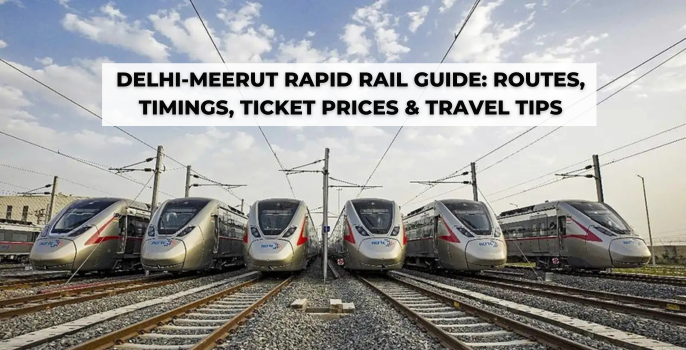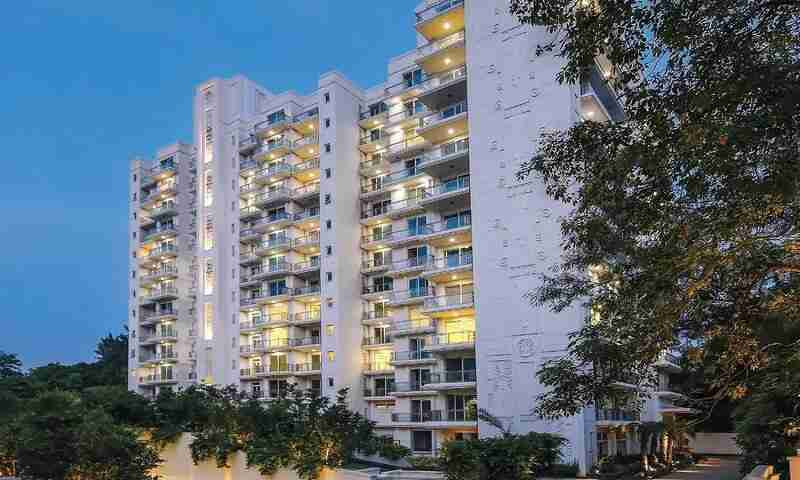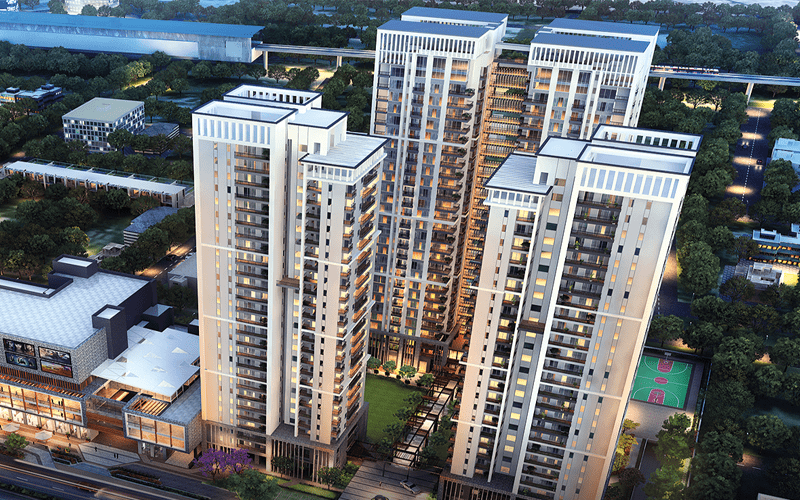Gurgaon Sector Map 2025: Updated Sector-Wise Division Guide
Gurgaon has changed dramatically over the last two decades. What began as a cluster of satellite sectors around Delhi is now a high-density city with its pulse. As of 2025, the way we navigate this city has evolved, and so has the way it's organised.
An updated Gurgaon sector map is no longer a luxury; it's a necessity. Whether you're a new resident, a property seeker, or someone managing logistics, a Gurgaon map sector wise provides the clarity required to make sense of its urban sprawl. For many, the Gurgaon road map is now only half the picture.
How is Gurgaon divided Sector-Wise in 2025?
Gurgaon is divided into 115 sectors, but the sequence isn't straightforward. It isn't numerical from 1 to 115 in the way you might expect. Some numbers are skipped, as well as rearranged. The sector system is more like a puzzle that's been solved over time through layers of planning.
Broadly, the division looks like this:
- Sectors 1 to 57: Known as Old Gurgaon
- Sectors 58 to 115: Considered New Gurgaon
- Special-use pockets: Include commercial-only sectors, institutional zones, and mixed-use belts
The planning is not only numerical but also functional. Sectors are categorised for housing, commercial activity, industry, public services, or sometimes all at once.
Several sectors, such as 29, 43, and 47, combine residential neighbourhoods with office spaces, giving rise to daily traffic congestion and high footfall. On the other hand, newer sectors are better spaced, with defined boundaries and planned layouts.
The original layout didn't account for this rapid growth, but the DLF Phase 3 map helped establish what organised private sector development could look like.
Old Gurgaon vs New Gurgaon: Characteristics and Boundaries
The difference between Old Gurgaon and New Gurgaon is not only visual; it's emotional. People feel it, and you know when you have crossed over to New Gurgaon. Old Gurgaon, from Sectors 1 to 57, is home to many of the original residential blocks of the city.
New Gurgaon, from Sectors 58 to 115, feels more organised. The area features wider roads and better drainage facilities. These are the sectors being developed with the future in mind. Most projects here began post-2010 and continue to expand in 2025.
Here's how they compare:
| Feature | Old Gurgaon | New Gurgaon |
|---|---|---|
| Sector Range | Sectors 1 to 57 | Sectors 58 to 115 |
| Development Era | 1980s to early 2000s | Post-2010 onward |
| Infrastructure | Narrow roads, aging infrastructure | Wider roads, modern infrastructure |
| Population Density | Denser, older residential blocks | Less dense, planned layouts |
| Connectivity | Strong public transport networks, traditional markets | Proximity to expressways, smart city features |
| Land Use | Mix of residential and commercial, often congested | Integrated townships with better zoning |
| Real Estate Growth | Stable, slower | Faster, with premium housing and corporate hubs |
| Key Landmarks | Traditional markets, HUDA planned areas | DLF Phase 3 map influence, Cyber City, Golf Course Road |
| Development Authorities | Mainly HUDA | GMDA and Private Developers leading growth |
| Urban Feel | Historic, bustling, organic growth | Organized, spacious, future-oriented |
The map of Gurgaon city sector-wise gives a full picture of how these two halves of the city coexist with notable differences in feel and function.
Role of GMDA, HUDA, and Private Developers in Sector Design
GMDA, HUDA, and private developers are the three powerful influencers behind Gurgaon's progress. Each has shaped the city in its own way. Here is what you should know.
- HUDA - (Haryana Urban Development Authority) was the starting point. It laid out the earliest sectors and built the first major roads, water lines, and zoning models. Most of Old Gurgaon came from its vision.
- GMDA - (Gurugram Metropolitan Development Authority) emerged later and introduced a new level of oversight. With GMDA, Gurgaon saw improvements in stormwater systems, digital mapping, and integrated development plans.
- Private Developers - Private developers like DLF, Vatika, and Unitech redefined Gurgaon's architecture. They filled the gaps between plans with real-world execution. Their residential zones, commercial centres, and integrated complexes turned empty land into liveable sectors.
The role of the DLF Phase 3 map is particularly crucial. It shows the success of self-contained living. Sectors 24, 25, and 28 grew around it, shaped by its influence. Their projects defined the value of the surrounding land.
Together, these players made Gurgaon what it is today: a layered city, where each sector has a backstory, and each development tells a tale of intent, or in some cases, improvisation.
Gurgaon Sector Map - Updated Layout for 2025
The updated Gurgaon sector map of 2025 reflects expansion as well as evolution. It shows not only where things are located, but also where the city is heading. It captures emerging zones and shifting priorities in development.
The layout has been shaped by two major forces: better roadways and increased land acquisition. As sectors grow outward toward Dwarka Expressway and Pataudi Road, a new pattern is emerging: longer corridors, wider sectors, and more integrated planning.
The important areas in the 2025 layout include the following.
- Sectors 79 to 95: Fastest-developing zones along the Southern Peripheral Road. These sectors are becoming the preferred residential hub for working professionals due to improved connectivity.
- Sectors near NH-8 and Manesar: Industrial and logistics parks are pushing development in this direction. These were once considered fringe areas, but now they're part of Gurgaon's active grid.
- DLF Cyber City and Golf Course Road zones: With the influence of the DLF Phase 3 map, these zones continue to attract corporate offices, restaurants, and premium housing.
Having access to a Gurgaon map with sectors PDF is incredibly helpful to make the most of this expansion. Digital maps help bring clarity to complex layouts, whether you're shortlisting plots or estimating commute times.
A reliable Gurgaon map, sector-wise, also adds context. It helps investors and residents understand the relationships between residential zones, commercial pockets, and public infrastructure.
To navigate the ever-expanding urban landscape efficiently, having access to a Gurgaon map sector-wise is essential for residents, investors, and visitors alike. Our detailed map of Gurgaon city sector-wise provides clear insights into the division between Old Gurgaon and New Gurgaon, highlighting key sectors, roads, and development zones. For your convenience, you can download the complete Gurgaon map with sectors PDF here, featuring vibrant colors and all 115 sectors marked clearly to help you plan your commute, property search, or business decisions effortlessly.
Download Gurgaon Sector Map 2025
Final Words
The layout of Gurgaon in 2025 is a record of fought space constraints and reimagined itself. Each sector is a marker of progress and planning choices.
With an updated Gurgaon sector map, it's easier to navigate not just the streets but the choices that come with living, working, or investing here. The DLF map continues to anchor growth in the central zones, while a Gurgaon map sector-wise, gives a complete view of how the city continues to take shape.
Frequently Asked Questions About Gurgaon Sector Map
Q1: How many sectors are there in Gurgaon as per the latest map?
Gurgaon has over 115 numbered sectors as per the latest sector-wise map of 2025. These are divided between Old Gurgaon (Sectors 1-57) and New Gurgaon (Sectors 58-115), each with its own planned layout and purpose.
Q2: What is the difference between Old Gurgaon and New Gurgaon sectors?
Old Gurgaon includes sectors developed before the 2000s and is known for its dense population, traditional markets, and legacy infrastructure. New Gurgaon sectors are planned post-2010 and offer modern infrastructure, wider roads, and emerging residential communities.
Q3: Which Gurgaon sectors are best for buying residential property?
Sectors like 57, 67, 70, 102, and 113 in New Gurgaon are preferred for buying residential property due to better connectivity, modern amenities, and ongoing real estate development. DLF Phases in sectors 24, 25, and 28 are also premium choices.
Q4: How is the connectivity across Gurgaon sectors?
Gurgaon sectors are well connected through major roads like NH-48, Golf Course Road, MG Road, and Dwarka Expressway. The city is also served by Delhi Metro (Yellow Line) and Rapid Metro in major sectors like 21, 24, 25, and 29, ensuring smooth travel across the city.








